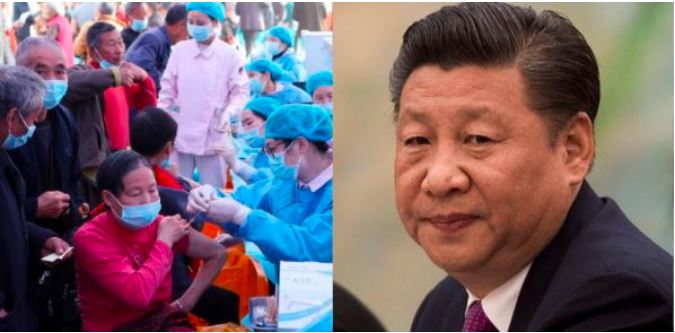Residents in some parts of China who are dealing with a shortage of coronavirus vaccines are yet to obtain their second doses, but a health official told state media that the shortage will be alleviated by June as development ramps up.
According to Reuters’ calculations, China’s huge inoculation programme has slowed to a daily average of around 3.3 million doses in the seven days leading up to Monday, down from 4.2 million the week before.
In an interview with the Global Times, Zheng Zhongwei, the director of a team organising vaccine development projects, said, “At the present, domestic vaccine supply is relatively tight, but from May, especially after June, the situation will ease significantly.” Zheng did not specify how serious the crunch was or which regions of the country were affected. The official mouthpiece of the ruling Communist Party of China, the Global Times, did not say how long residents of those areas had to wait for the second shot.
This could be due to the fact that only those regions were affected which do not provide economic benefits to China in comparison to cities like Beijing or Shanghai. As China prioritises supplies to key provinces, big cities like Beijing and Shanghai have expanded vaccination drives to include foreigners, with the rate in some cities outpacing the national average. Beijing, for example, has vaccinated more than half of its population of 21.5 million people.
China is expected to manufacture 3 billion doses of the vaccines by the end of the year, allowing it to meet demand in the second half of 2021, according to Zheng. The two doses of vaccines produced by domestic firms Sinopharm and Sinovac Biotech can be separated by up to eight weeks, according to Chinese national guidelines.
According to Mi Feng, a spokesperson for the National Health Commission, local authorities should ensure that the second dose can be given within eight weeks. “Avoid the situation where there’s no dose following the first one,” he told a news conference on Wednesday.
This is not the first time that one section of the society in China has been overlooked over the other regarding the vaccines or even the type of vaccine being used. On April 13, the first batch of the German-produced Pfizer-BioNTech COVID-19 vaccine arrived in mainland China and was made available for vaccination at a cost to Chinese people. This is the first time the Chinese regime has permitted the administration of an imported COVID-19 vaccine to Chinese citizens.
However, the launch of the Pfizer-BioNTech vaccine was not announced by Fosun Pharma. Censors took down similar stories in China’s media and posts on social media sites hours after they were released. Chinese citizens heard about the delivery of the first batch of BioNTech vaccine from saved websites.
First, the discrimination in the vaccine delivered and then the city which gets the vaccine first. China has been claiming that its vaccine program has been going stupendously well. But the truth is, China can claim so because it has been vaccinating only those places where the vaccine could be made easily available and could be afforded by people, unlike the smaller cities which are languishing in extreme poverty and backwardness.
